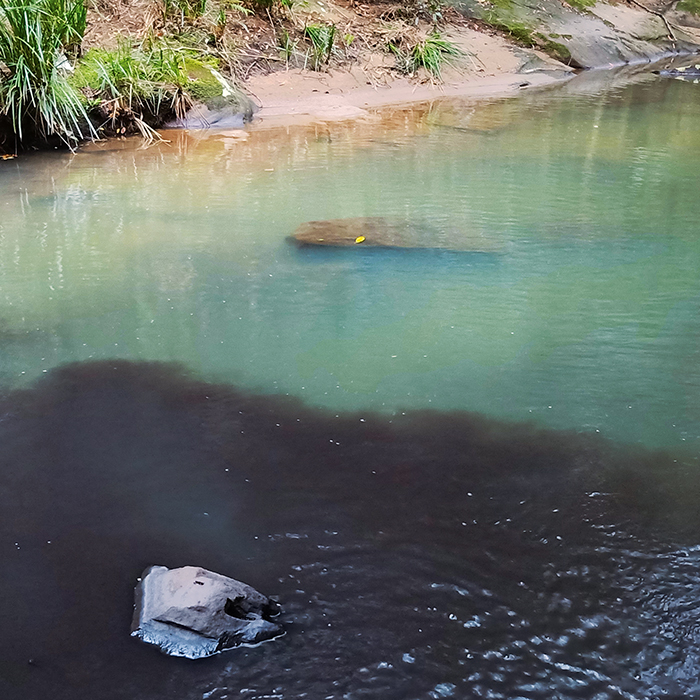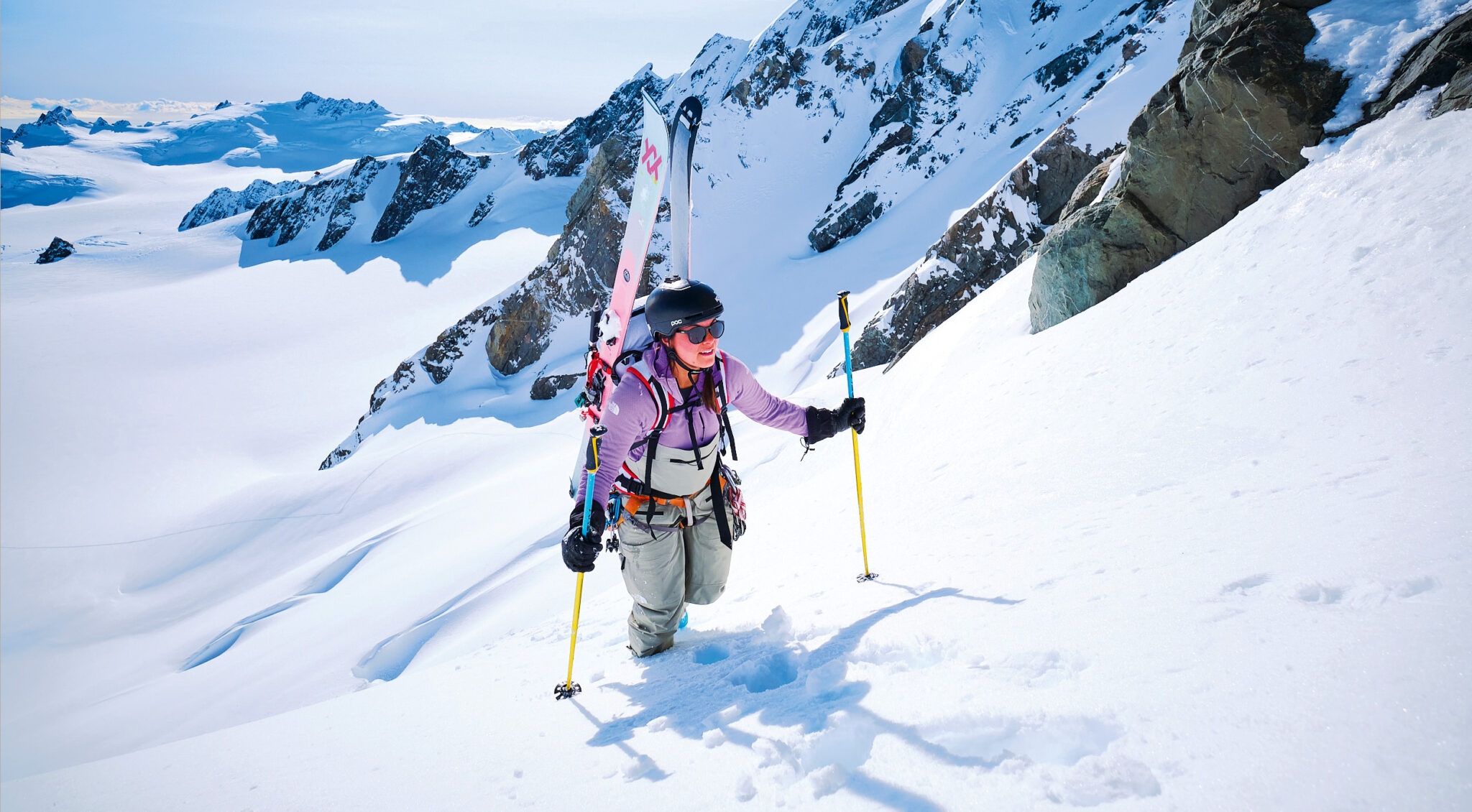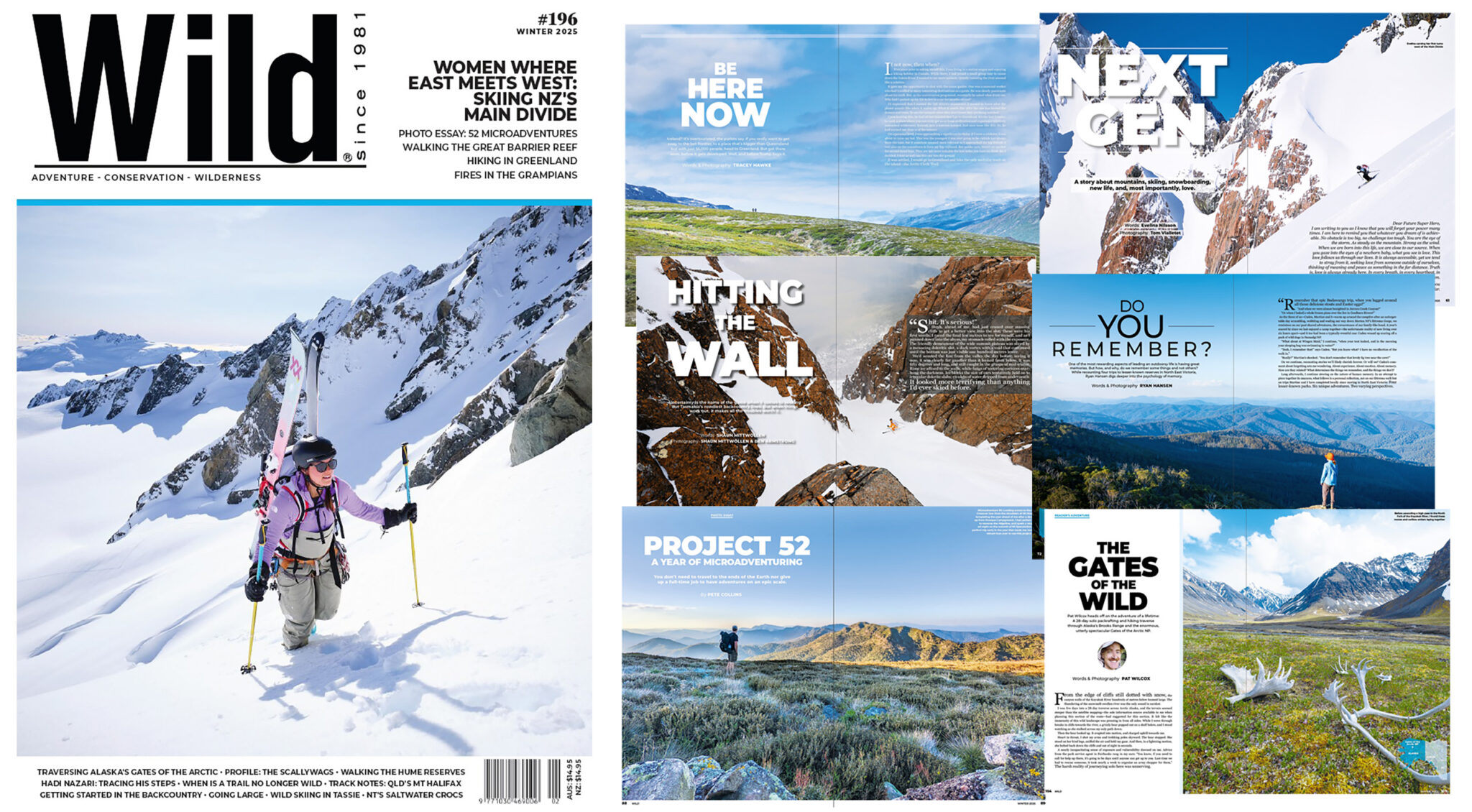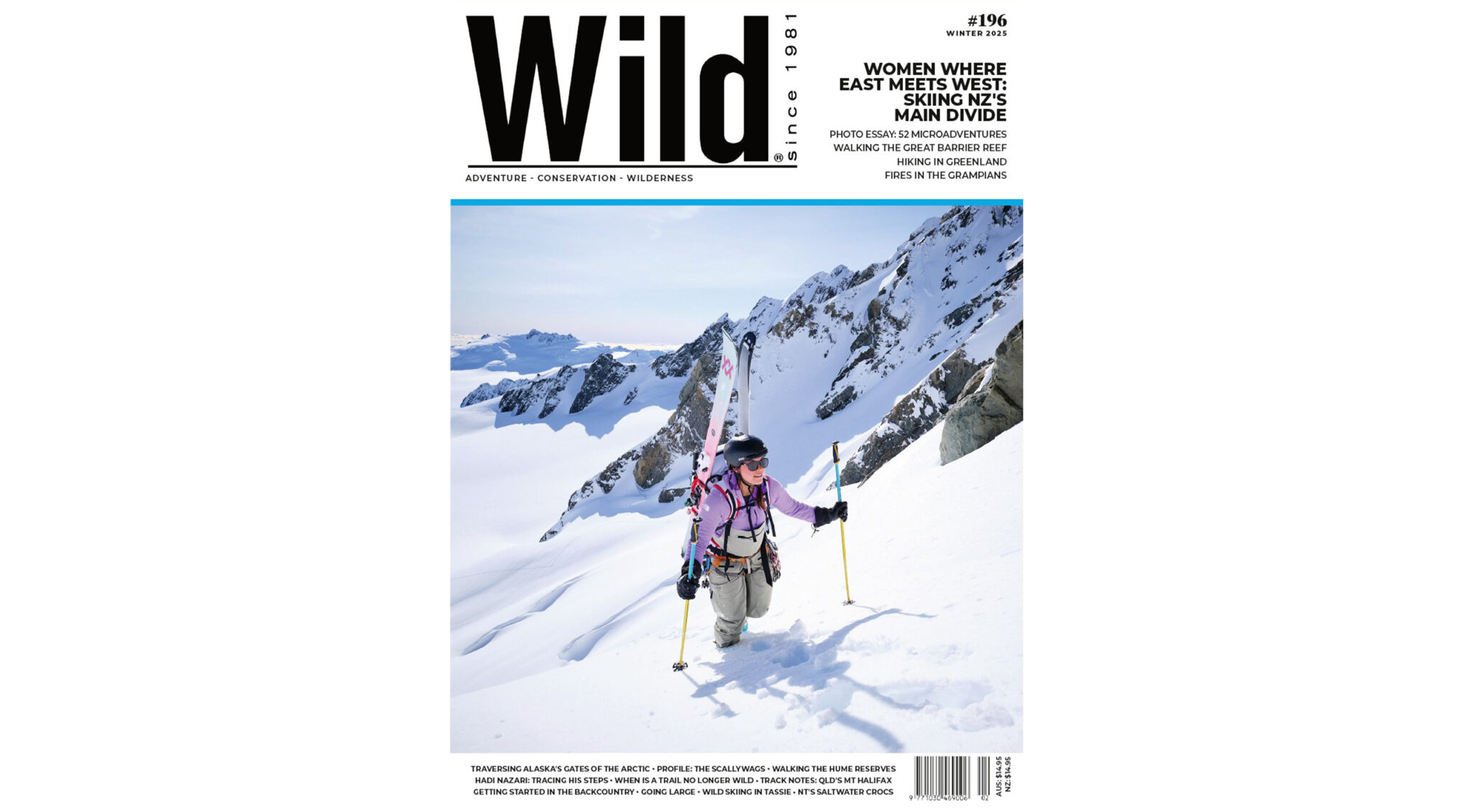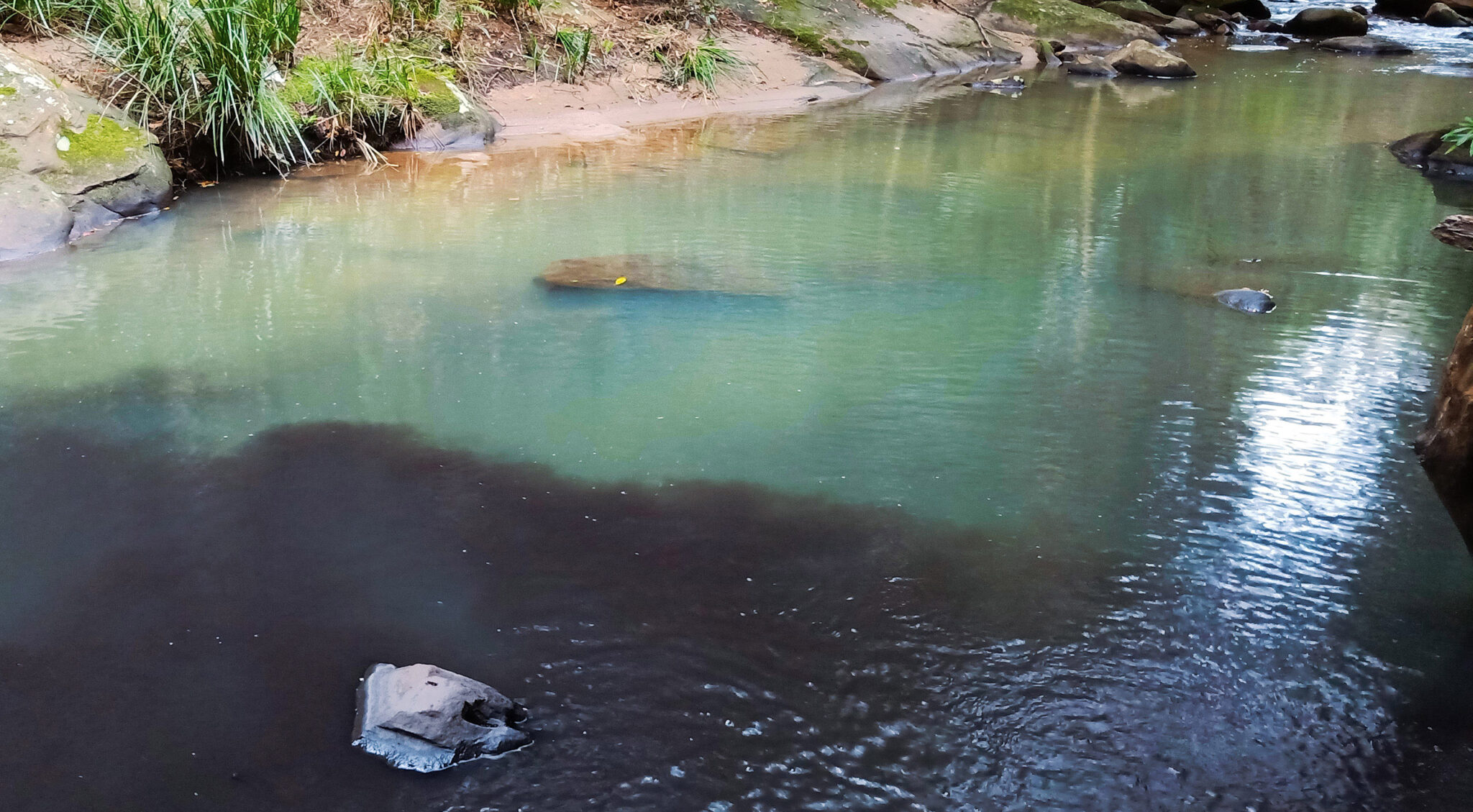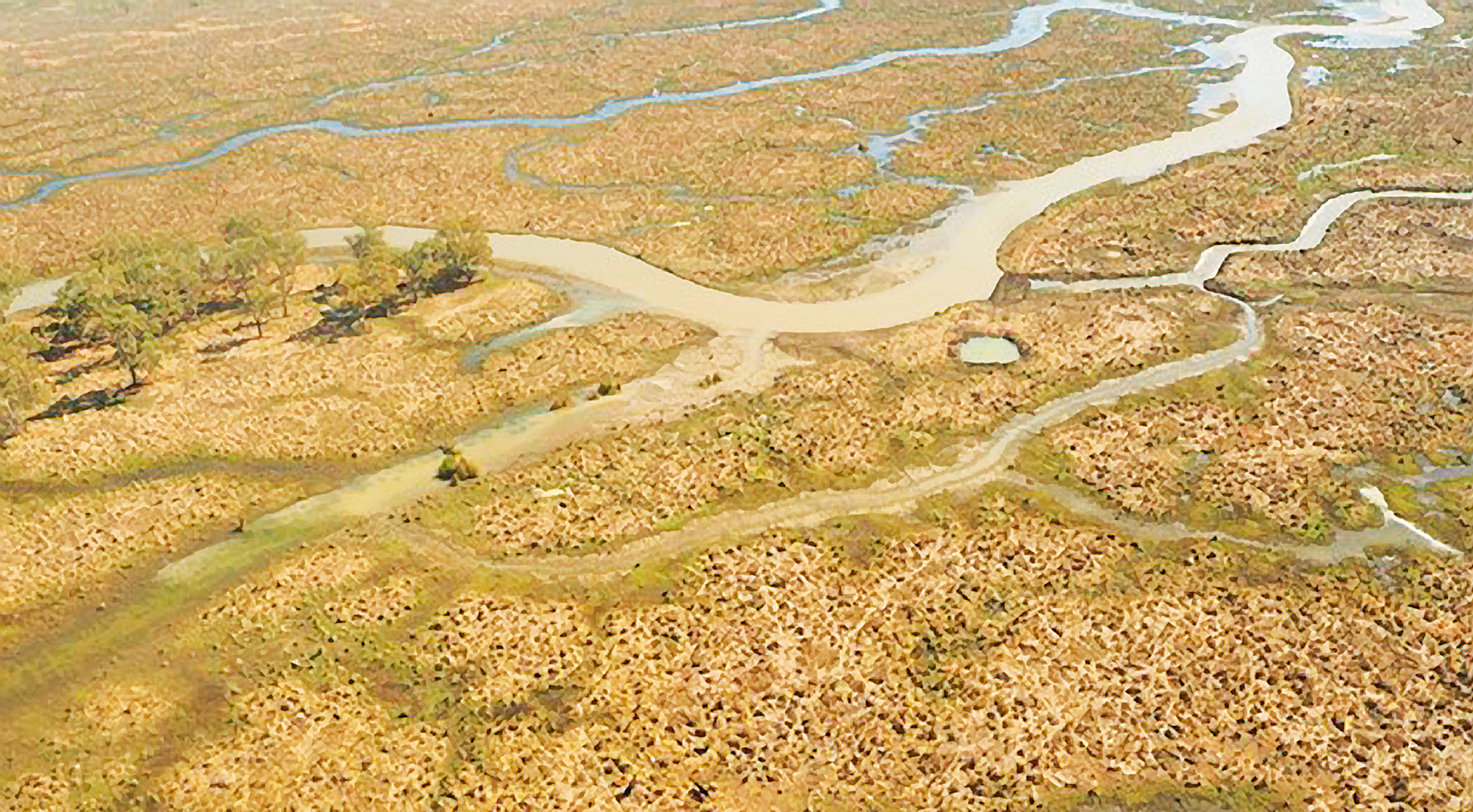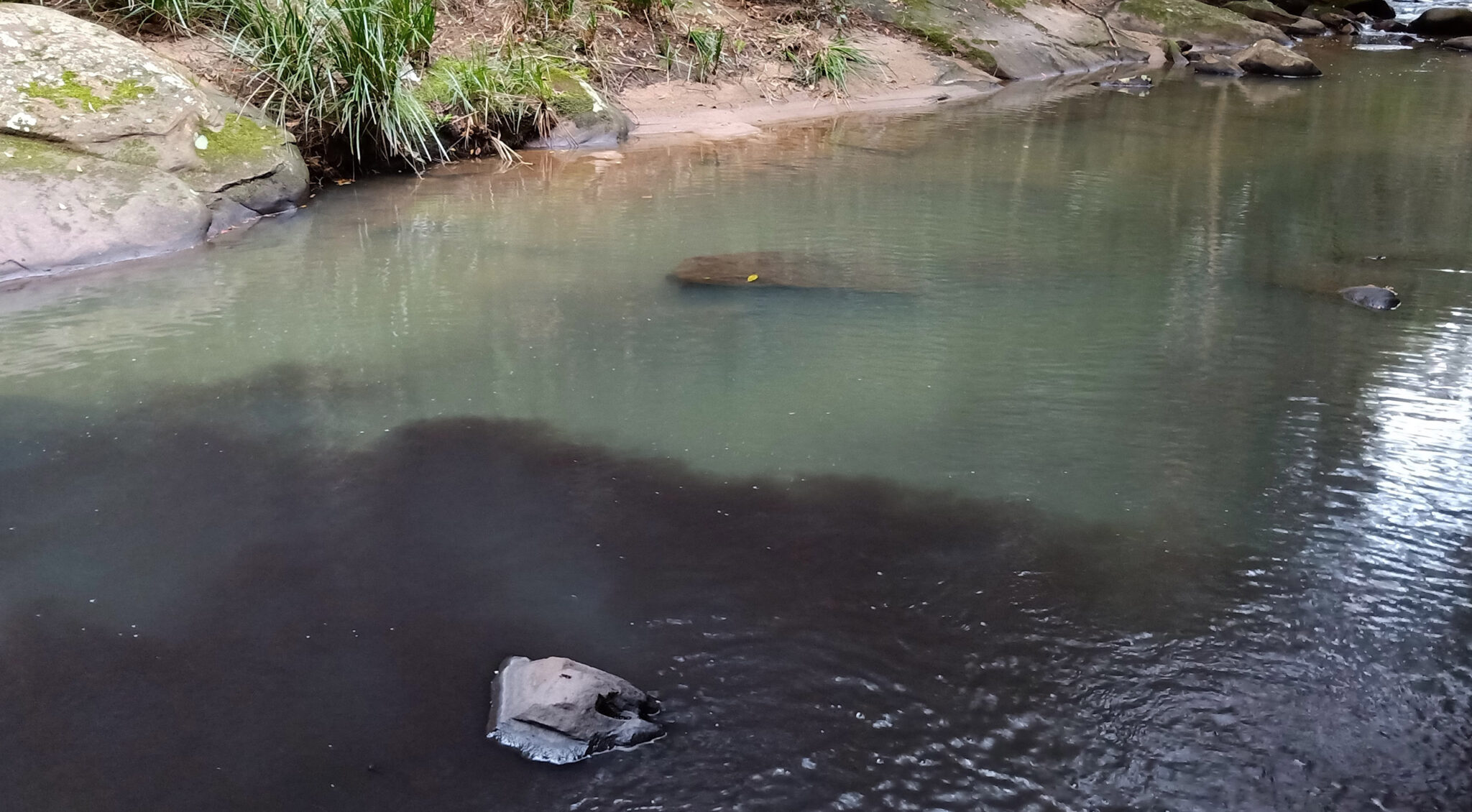Green Pages: Issue #196, Winter 2025
A selection of environmental news briefs from around the country.
Banner image caption: Filthy coal-contaminated water entering the Hacking River in the Royal NP on Sept 8, 2022
(This piece originally featured in Wild #196, Winter 2025)
PEABODY HELD TO ACCOUNT – A BIT
Dharawal Country
In the opening pages of Wild Issue #196, there is an unusual double-page advertisement – a notice placed by order of NSW’s Land and Environment Court. court order. Wild’s Editor James McCormack explains the court order, and his role in it.
Readers will have no doubt noticed at the beginning of this issue the double-page advertisement paid for by Peabody, a US multinational that owns and operates Australia’s oldest continually working coal mine, Metropolitan Colliery. The mine is in Helensburgh, where I live (it’s roughly halfway between Sydney and Wollongong), and it also happens to abut the Garawarra State Conservation Area, which in turn borders the world’s second-oldest national park—the Royal. Just beneath the mine lies Camp Gully Creek. It flows tranquilly through beautiful rainforest before, just one kilometre downstream of the mine, it enters the Royal and joins the Hacking River, home to a recently relocated, and much-publicised, colony of platypuses (see Wild Issue #189).
Back in September 2022, I was travelling through the lower reaches of Camp Gully Creek, just above its confluence with the Hacking. The area is rarely visited, despite the Royal’s urban proximity. And what I saw that day was shocking. Inky water, the colour of flat Coca Cola, flowed down the stream and over the cascades. It was surreal.
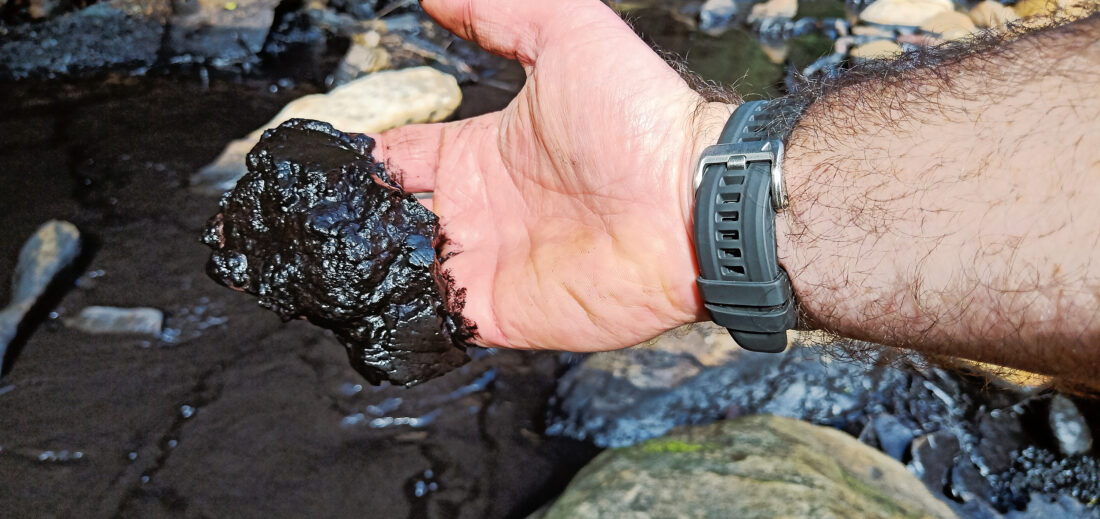
Once I arrived home, I contacted the EPA. At first, they weren’t interested. Guessing the source had to be the Metropolitan Mine—but knowing that guessing wasn’t good enough—I returned to the creek, and then headed upstream to confirm the source was the mine. It was. Eventually, possibly thanks to multiple posts I made on Wild’s social pages, I was able to get the EPA to investigate, and to get the mainstream media interested in the pollution event; this in turn prompted the then Environment Minister James Griffin to visit the site, where I met and spoke with him.
I could go into further details—thousands of words of them, in fact—but there’s not the space here. What is salient is that a case against Peabody for this pollution event, and a subsequent one, was brought before the NSW Land and Environment Court. Initially, five charges were considered, each—I believe—with a possible penalty of $1 million; that was soon downgraded to three charges. Still, $3 million seemed a stiff enough potential fine.
Unfortunately, that did not eventuate. The court’s judgement was handed down on March 21; in total, the fines levied on the mine—for this September incident plus a subsequent one—totalled $196,560. This is manifestly inadequate. I’ve done the sums: Peabody’s 2024 revenue was $4.2 billion USD (ie $6.36 billion AUD); this fine is literally the same as fining someone who makes $80,000 just $2.47.
What’s more, in isolation, the ultimate fine for the September event was just $78,000. Another $54,000 fine was levied for the second pollution offence, plus $85,800 for a licence-breach offence. Peabody was also ordered to pay the EPA’s court and investigation costs, bringing the total payments to just over $500,000. The payments weren’t the only things the court imposed; another condition was that Peabody take out advertisements in the first five pages of Wild—and in three other newspapers—to admit its wrongdoing, hence the earlier double-page spread.
The mine tried claiming the pollution event was caused by heavy rain; this does not stand up to scrutiny. August that year, in fact, had been particularly dry; the nearest BOM station (Darkes Forest) registered just 21mm falling, less than a quarter of average.
There’s another element to this, however: Woronora Dam lies to the west of Helensburgh; within its catchment, there are reports of subsidence cracks caused by Metropolitan Mine. Upland wetlands and swamps have apparently been drained, threatening these precious ecosystems. But the areas of concern lie within Sydney Water’s Woronora catchment exclusion-zone; a $44,000 fine awaits any member of the public who ventures in to inspect for damage. Holding Peabody to account in this area is incredibly difficult.
Supposedly, the mine’s monitoring standards and wastewater-treatment processes have become more robust. Time will tell whether this proves true. But it’s clear that this fine is insufficient to act as a deterrent for the broader mining industry. The Royal NP, Garawarra SCA, and our environment in general deserve better.
JAMES MCCORMACK
Editor, Wild Magazine
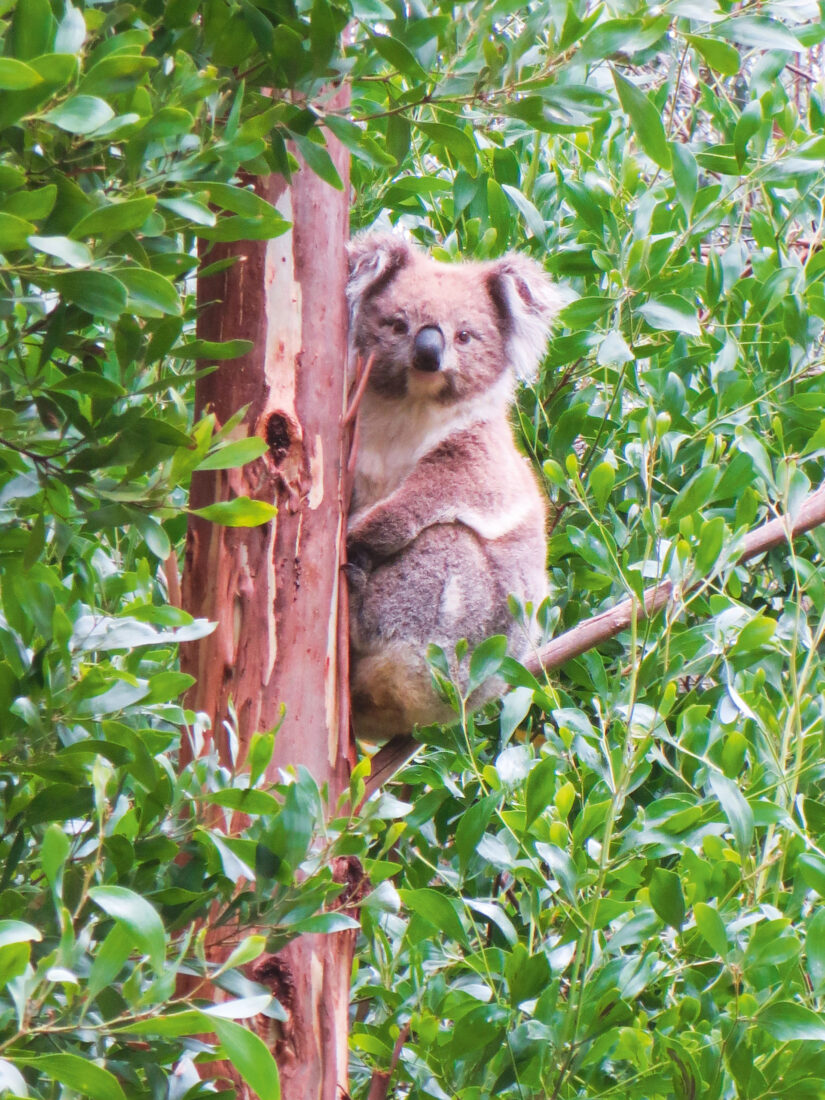
KOALAS CULLED FROM THE AIR
Gunditjmara Country
In late April, the Victorian Government began a koala shooting campaign at Budj Bim National Park in southwest Victoria. The government claimed the shooting targeted koalas impacted by a recent fire in the park. Almost 1,100 koalas were shot. Many likely suffered terrible deaths; some would also have had joeys.
This three-decades-long campaign to ‘control’ koala numbers in the region follows the introduction of the bluegum industry to southwest Victoria. These plantations became home to thousands of koalas. As the plantations are logged, surviving koalas have to look for new habitat. Budj Bim—a World Heritage Area jointly managed by the Gunditj Mirring Traditional Owners—is an obvious destination. The resultant overpopulation, drought and lack of post-fire food saw DEECA deciding to shoot surviving koalas from helicopters. This was a first for Australia, and sets a nasty ethical precedent. For more details and a full timeline, head to: melbournefoe.org.au/hundreds_of_koalas_killed_in_south_west_victoria
ANTHONY AMIS
Friends of the Earth, Melbourne
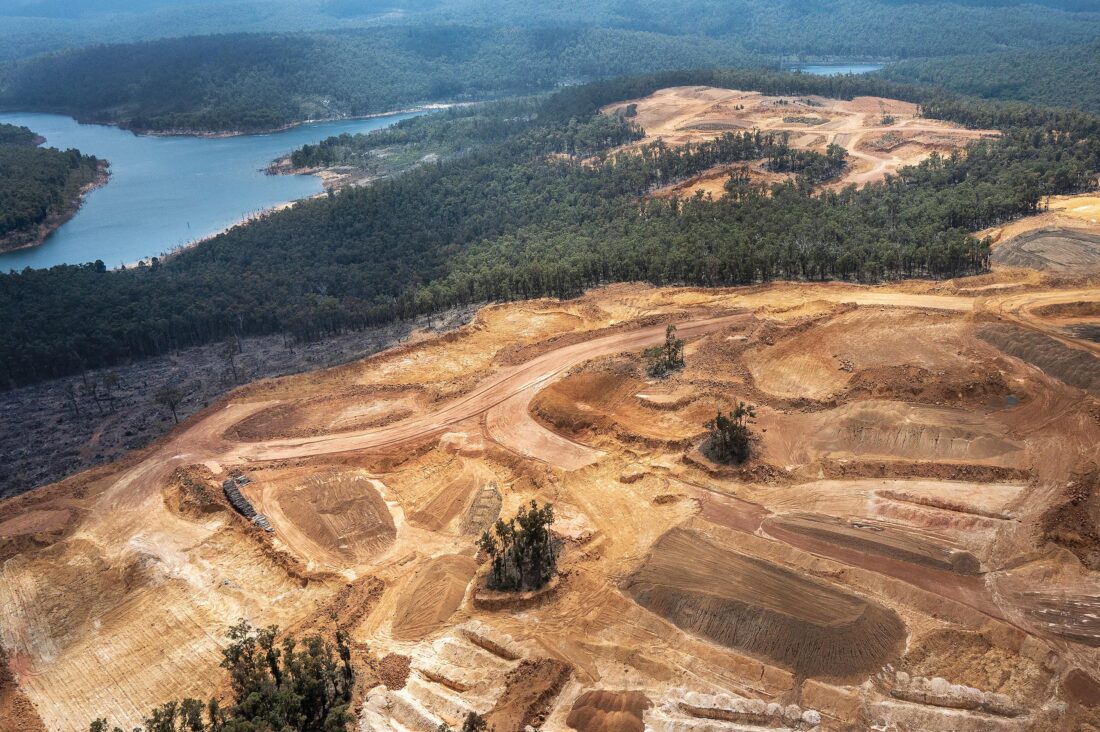
ENDING FOREST MINING
Noongar Country
The ancient and biodiverse Jarrah forests south of Perth are being bulldozed for bauxite mining. Rehabilitation is not possible for the tens of thousands of hectares of biodiverse forests already cleared, and now Alcoa is seeking approval for a massive expansion. Forest views for hikers on the renowned Bibbulmun Track will be replaced by wastelands, and it’s proposed that mountain bikers on the Munda Biddi Trail will have to take a new route if the US miner’s expansion gets right-of-way (again). Mining activities near dams are also threatening Perth’s drinking water, with contamination considered certain. Join the call to reject Alcoa’s expansion at: endforestmining.org.au
JESS BOYCE
WA Forest Alliance
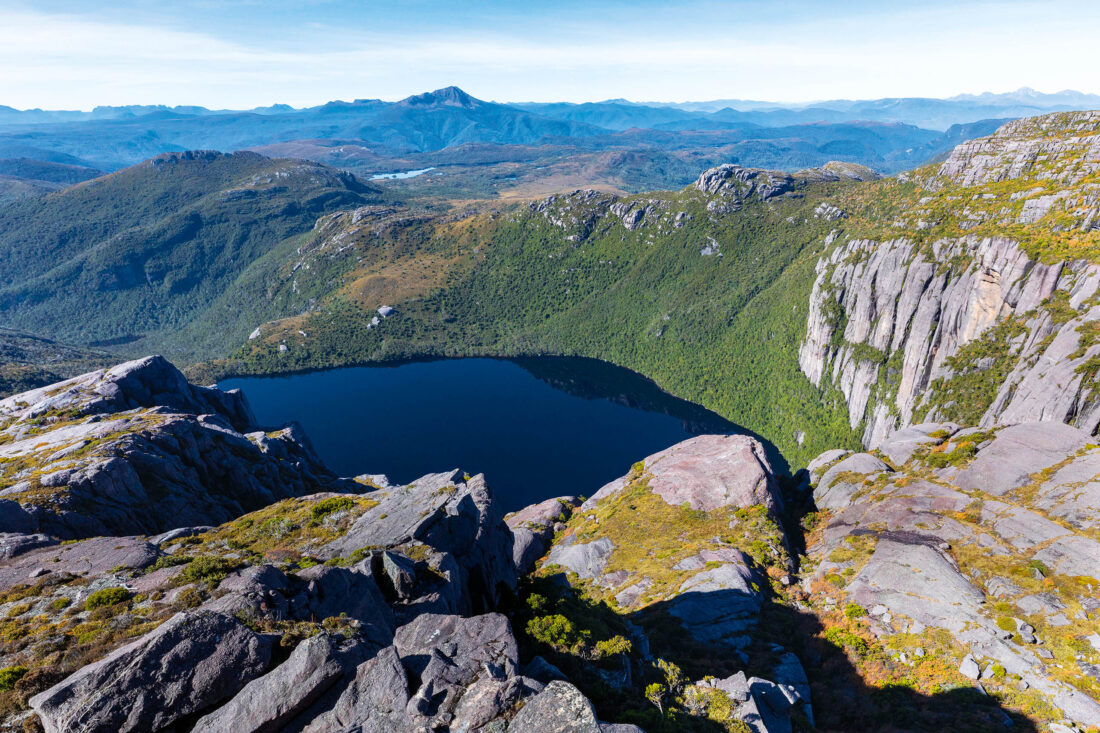
THE NEXT ‘ICONIC’ WALK?
Palawa-Pakana Country
The Tasmanian Government is steamrolling ahead with its ‘develop wilderness’ policy agenda in a seeming attempt to pave over Tassie’s wilderness backyard. Ignoring the huge backlash prompted by proposed developments at Lake Malbena and the South Coast Track, its planned $40+ million development of the next ‘iconic’ bushwalk in the Tyndall Range is smack-bang in the centre of a landscape chockers with wild character, and rich with natural and cultural values. It’s expected the plans will finally open for public comment in late winter; it will be a key moment to show the community’s strong opposition to this project and to the broader issue of privatising national parks. In the interim, you can read more about the history of the Tyndall Range on Wild’s website. Head to: Wild.com.au/conservation/the-tyndalls-under-threat-2025
JIMMY CORDWELL
The Wilderness Society
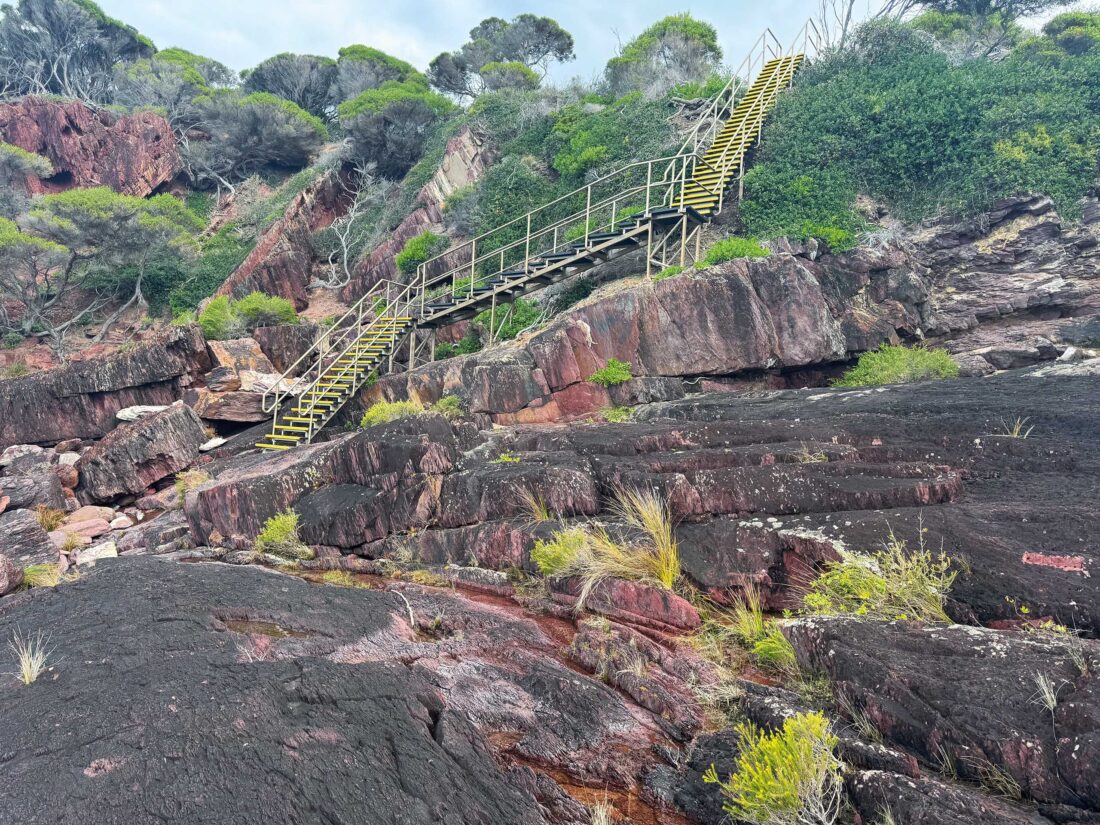
COASTAL EYESORE
Yuin Country
The new Light to Light Walk in Beowa NP on NSW’s South Coast is set to be completed shortly, and no doubt there will be a pumped-up media release to celebrate. While there has been a win for the community in that plans for lodge-style developments along the walk have been shelved, it would appear, however, that NPWS are literally paving the way for the L2L Walk to be made into an urbanised ‘Great Walk’. A case in point is the massive, expensive and sadly unnecessary stair structure near Pulpit Rock that has a huge impact on the wild character. But the funds spent building this eyesore—and, in fact, on the L2L development in general—could be put to better use just maintaining basic infrastructure, and engaging in conservation and other environmental works.
To learn more, head to ponp.org
MICK RIPON
Protect Our National Parks
If you liked this piece, you should subscribe to the print mag. Only a fraction of the great stories we run in the mag make it to our website; if you want to read them, head to subscribe.wild.com.au.

